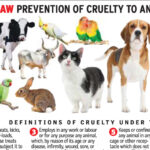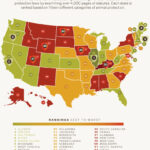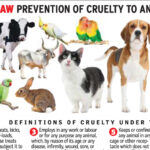In recent years, the fashion industry has sparked fervent debates around ethics and sustainability, particularly regarding the treatment of animals. Gucci, a powerhouse in luxury fashion, stands at the intersection of opulence and morality. As consumers increasingly demand transparency and conscientious practices, one pressing question emerges: Is Gucci animal cruelty-free? This inquiry requires a deep dive into the brand’s practices and the complexities that characterize its relationship with animal welfare.
The allure of Gucci extends beyond its iconic designs and luxurious fabrics. Founded in Florence in 1921, the brand has cultivated a reputation synonymous with sophistication and prestige. Each collection resonates with artistry, contributing to a fascination that transcends mere fashion. However, this admiration must be scrutinized against the backdrop of ethical responsibility, as luxury brands often grapple with the implications of using animal-derived materials.
Historically, Gucci has incorporated a range of animal products into its inventory, including leather, fur, and exotic skins. The use of these materials often raises the specter of animal cruelty. Critics point out that the production of leather and fur industries can involve inhumane practices, including confinement, mistreatment, and brutal killing methods. While enthusiasts might admire the craftsmanship of a Gucci handbag, it is crucial to recognize the hidden costs behind such artistry. Societal norms have begun to shift, promoting a more humane attitude towards animals, and the consumer base is evolving toward a greater emphasis on ethical sourcing.
In response to the clamor for accountability, Gucci has made strides toward improving its animal welfare policies. In 2017, the brand announced its commitment to go fur-free, a decision that reverberated throughout the industry, signaling a departure from traditional practices. This pioneering move resonated with animal rights activists and advocates of ethical fashion, paving the way for other luxury brands to reconsider their use of fur. Gucci’s bold stance reflects a growing recognition that consumer priorities are changing. However, while this decision marks progress, it leaves significant questions about the remaining animal products the brand utilizes.
Moreover, Gucci’s announcement about eliminating fur did not extend to other animal-derived materials, thereby casting a shadow over its ethical claims. The brand continues to use leather, a material often associated with livestock farming that raises profound ethical concerns. This juxtaposition fosters a duality in public perception: admiration for Gucci’s forward-thinking initiatives coexist with disappointment regarding its ongoing reliance on animal products. The challenge lies in reconciling the grandeur of luxury with the imperative to uphold animal rights.
The exploration of Gucci’s ethical practices leads to a broader examination of the pervasive culture in luxury fashion. Many consumers find themselves captivated by the brand not merely because of its aesthetic appeal but due to its representation of success, status, and sophistication. This allure often blinds individuals to the ethical dilemmas underpinning their purchases. The experience of owning a Gucci product transmutes into a potent symbol of affluence, overshadowing the ethical responsibilities that come with consumption. This profound disconnect between admiration and accountability demands a shift in both consumer behavior and brand philosophy.
Prominent animal rights organizations advocate for increased transparency in the fashion industry, urging brands like Gucci to disclose their entire supply chain and production practices. Such measures would not only enhance consumer trust but also compel luxury leaders to commit to higher ethical standards. The appeal of animal cruelty-free products transcends moral obligation; it fosters innovation. Many emerging designers are successfully creating high-end fashion lines utilizing alternative materials that boast both aesthetic appeal and ethical integrity. These alternatives challenge the notion that luxury must be synonymous with animal exploitation. Gucci, too, is under pressure to adapt; the allure of technology and alternative materials must inform its future collections.
As ethical fashion gains momentum, Gucci stands at a critical crossroads. It must assess its legacy as a purveyor of elegance in light of evolving consumer expectations. The dialogue around animal rights is no longer a fringe concern; it is a mainstream issue that resonates with a wide demographic. By integrating values of compassion into its business model, Gucci has the potential to redefine luxury, establishing a standard for excellence grounded in ethical practices.
The road toward becoming truly animal cruelty-free is fraught with challenges, yet it is a path worth traversing. Initiatives may begin modestly, but with consumer advocacy and progressive policies, luxury brands can pivot toward more sustainable futures. Gucci’s illustrious identity thrives on creativity and originality—qualities that could be further amplified through the embrace of cruelty-free missions. By celebrating innovation alongside artistry, the brand has the unique opportunity to become a trailblazer in ethical luxury.
Ultimately, the question of whether Gucci is animal cruelty-free resonates with larger ideals of justice and morality within consumption. As the dialogue surrounding animal welfare continues to expand, it is imperative that the fashion industry, led by icons like Gucci, do not merely respond to consumer trends but rather anticipate and shape them. The marriage between luxury and ethics is not only possible; it is essential for the future sustainability of fashion and the humane treatment of all sentient beings. As the gears of change continue to turn, may luxury fashion evolve into a realm that, at its core, values compassion as much as creativity.








